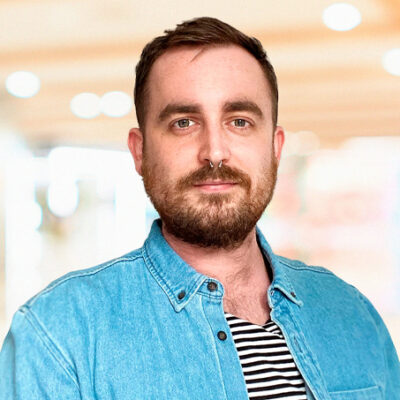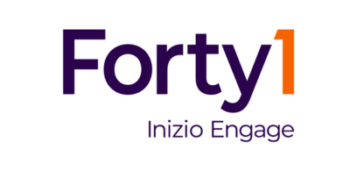If diversity is ‘being invited to the party’ and inclusion is ‘being asked to dance’ – who’s planning the party?
 Luke-Matthew Iveson
Luke-Matthew Iveson 2020 was a turning point for many organisations. Society demanded that more investment in and accountability around Diversity, Equity, and Inclusion (DEI) became a top priority for organisations – on the whole we have seen a positive response, with organisations moving from simply ticking a box and empty gestures to action-focused and authentic DEI practices. Whilst more and more organisations are making commitments and participating in DEI discourse, there is so much more that needs to change.
There has been a huge increase in the number of DEI-specific roles – such as Diversity and Inclusion Directors or Chief Diversity Officers. LinkedIn revealed that over the last 5 years these types of roles have seen a 71% increase, with a huge spike around May 2020 in response to the Black Lives Matter movement. The question here is whether this is reactive to societal pressure, and whether organisations see these types of roles as a quick fix? Also, creating such positions with the sole responsibility of driving DEI efforts, removing accountability from leadership teams and resulting in top down, and even siloed, workstreams isn’t a solution – it’s the responsibility of the whole organisation, not just one person.
In a recent survey by Culture Amp, data suggested that 56% of respondents have a formalised DEI council or Forum in place – with the responsibility for advancing DEI. However, only 49% have a strategic plan in place, 37% share DEI data with leadership teams and only 34% report having enough resources to support DEI initiatives. Does this mean organisations are running before they can walk? Is there a real investment being made to ensure DEI is advanced authentically, or is it still tokenistic smoke and mirrors?
So how should organisations ensure they have effective DEI governance structures in place?
I want to go back to the now very popular quote from Vernā Myers: ‘diversity is being invited to the party; inclusion is being asked to dance’. Whilst I see the benefit in quotes like this, I also think that they oversimplify some complex concepts and ideas; that being said, there is a place for them, and many find them useful and they allow an accessible entry point into a deeper discussion. As with the concept of belonging, many working across the DEI landscape have built on this quote – so I’m going to do the same. If diversity is being invited to the party and inclusion is being asked to dance – then effective DEI governance is the party planning committee (made up of the whole organisation). Imagine going to party that was planned terribly, with a host who didn’t really care if you were there or not – this is the same for many employees at organisations where no real or authentic investment has been made in DEI.
DEI and action go hand in hand; action-focused strategies help to achieve real change…but actions can quickly become damaging if not thought about carefully. Going back to the Culture Amp data, setting up DEI councils are a great action and proof point – but if created only to tick a box these committees quickly fall apart, are under resourced and burn out. Organisations need to create the right foundations for real action to happen and for change to stick. This means setting up effective DEI governance structures with clearly defined roles and responsibilities that are communicated company-wide.
For us, ‘governance’ means defining open, two-way communication and providing a clear understanding of responsibilities and accountability. Moving away from a hierarchical, top-down structure to an inclusive ecosystem that represents how different parts of an organisation are all equally important and connected, being aligned to a shared goal: to make the world a better place for everyone. A perfect blend of strategy and heart.
A top-down approach simply won’t work; organisations must create a governance structure that fosters collaboration, creates space for conversations and promotes active listening to produce the change the whole organisation is looking for. There’s no ‘one size fits all’ approach either; it’s important that organisations spend time collaborating and listening to design their own ecosystem that clearly defines roles and responsibilities, engages the whole organisation and avoids ticking boxes.
We have created a model and approach that identifies key roles and responsibilities, as well as the supporting behaviours and capabilities. Rather than a top-down hierarchical structure, it captures key influencers and stakeholders that all have a role to play:
- The Employees: CONTRIBUTE – Empowered by the DEI Governance Ecosystem, and roles within it, to share their diverse thoughts, experiences, challenges, and needs.
- The Employee Resource Groups: ADVISE – Valuable communities that can provide important insights if given the right support.
- The DEI Councils: DEFINE – A dedicated group of influencers that can use insights from the organisation to shape the right approach.
- The Leaders: ACTIVATE – The decision makers with the organisational power to bring about real change, if they are brought into the approach.
- The CEOs: INSPIRE – Driving the Ecosystem from the top, being accountable and ensuring DEI is a top priority and not just false promises.
For every organisation this will be different and defined in their own unique way – not a carbon copy of every other industry competitor. We partner with clients to support them in capturing those valuable insights through engaging employees, working with DEI Councils and Taskforce members to shape the right approach for them, and building leadership capabilities to be accountable. Only then can organisations begin to think about activating strategic plans in authentic and meaningful ways.
If you want to arrange a call to discuss your organisation’s DEI approach and how a DEI ecosystem could be developed, please contact us and let’s chat.



